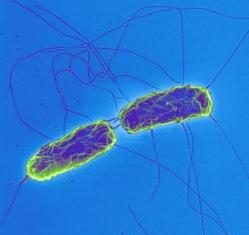Bilestones Play Major Role In Perpetuating Typhoid Bacteria
 A new study has suggested that typhoid bacteria gather up bilestones to continue the illness.
A new study has suggested that typhoid bacteria gather up bilestones to continue the illness.
People who hold these bacteria in their gall bladders, even without symptoms, can pass on the disease to others with active typhoid fever, particularly in developing regions of the world where hygiene is poor.
The disease swells via fecal-oral contact, including through improper hand washing by those who make food.
Researchers as well as medical doctors have long known that these bacteria, Salmonella enterica serovar Typhi, amass in the gallbladder.
In actual fact, the most widely accepted treatment of constant typhoid is exclusion of the gallbladder.
John Gunn, professor of molecular virology, immunology and medical genetics at Ohio State University and senior author of the study, stated, "We're trying to get to the heart of why this is. Why does Salmonella sit in a pool of highly concentrated detergent, which is what bile is, but not die?"
"It's got to survive in some way, and a good way to survive is by forming a biofilm."
Biofilms, the gathering of bacteria on bilestones, typically do not react properly to antibiotic medications or the human immune response.
But now that the biofilms themselves have been created in connection with asymptomatic typhoid infection, they present a possible treatment alternative to costly and invasive gallbladder exclusion, said Gunn, who is also a vice director of Ohio State''s Center for Microbial Interface Biology.
Particularly, targeting a sugar polymer on the bacterial surface, which encourages growth of the biofilm might be an approach to put off biofilm development during the initial place, he said.
Gunn and his team workers examined this biofilm formation in rats infected with a strain of Salmonella bacteria resembling the strain, which results in typhoid fever in human beings.
The researchers also found these biofilms on gallstones in Around 5% of human beings in a Mexican hospital who had their gallbladders removed owing to difficulties from gallstones.
Gunn said, "The mouse data coupled with the human data suggest strongly that biofilms lay a foundation that allows for establishment and maintenance of chronic typhoid infection."
The study results have been published in the online early version of the Proceedings of the National Academy of Sciences. (With Input from Agencies)